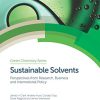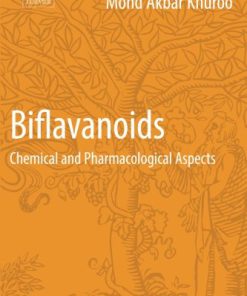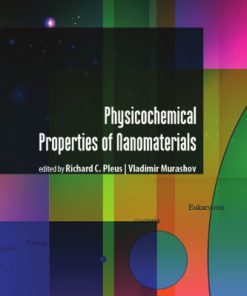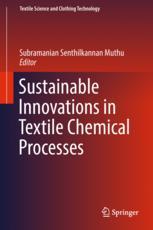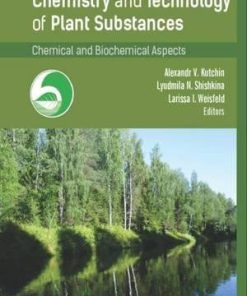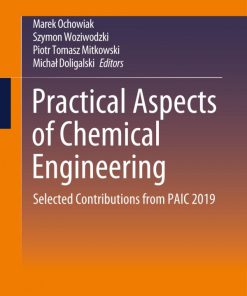Physico chemical Aspects of Textile Coloration 1st Edition by Stephen Burkinshaw ISBN 1118725581 9781118725580
$50.00 Original price was: $50.00.$25.00Current price is: $25.00.
Physico-chemical Aspects of Textile Coloration 1st Edition by Stephen M. Burkinshaw – Ebook PDF Instant Download/Delivery: 1118725581, 978- 1118725580
Full download Physico chemical Aspects of Textile Coloration 1st Edition after payment

Product details:
ISBN 10: 1118725581
ISBN 13: 978-1118725580
Author: Stephen M. Burkinshaw
The production of textile materials comprises a very large and complex global industry that utilises a diverse range of fibre types and creates a variety of textile products. As the great majority of such products are coloured, predominantly using aqueous dyeing processes, the coloration of textiles is a large-scale global business in which complex procedures are used to apply different types of dye to the various types of textile material. The development of such dyeing processes is the result of substantial research activity, undertaken over many decades, into the physico-chemical aspects of dye adsorption and the establishment of ‘dyeing theory’, which seeks to describe the mechanism by which dyes interact with textile fibres.
Physico-Chemical Aspects of Textile Coloration provides a comprehensive treatment of the physical chemistry involved in the dyeing of the major types of natural, man-made and synthetic fibres with the principal types of dye. The book covers:
- fundamental aspects of the physical and chemical structure of both fibres and dyes, together with the structure and properties of water, in relation to dyeing;
- dyeing as an area of study as well as the terminology employed in dyeing technology and science;
- contemporary views of intermolecular forces and the nature of the interactions that can occur between dyes and fibres at a molecular level;
- fundamental principles involved in dyeing theory, as represented by the thermodynamics and kinetics of dye sorption;
- detailed accounts of the mechanism of dyeing that applies to cotton (and other cellulosic fibres), polyester, polyamide, wool, polyacrylonitrile and silk fibres;
- non-aqueous dyeing, as represented by the use of air, organic solvents and supercritical CO2 fluid as alternatives to water as application medium.
The up-to-date text is supported by a large number of tables, figures and illustrations as well as footnotes and widespread use of references to published work. The book is essential reading for students, teachers, researchers and professionals involved in textile coloration.
Physico chemical Aspects of Textile Coloration 1st Table of contents:
Chapter 1: Fundamental Aspects of Textile Fibres
- 1.1 Textiles
- 1.2 Textile Fibres
- 1.3 General Physical and Mechanical Characteristics of Textile Fibres
- 1.4 Properties of Textile Fibres
- References
Chapter 2: Dyes
- Introduction
- 2.1 Dyes
- References
Chapter 3: The Role of Water in Aqueous Dyeing
- Introduction
- 3.1 Water Structure
- 3.2 Water Availability and Global Consumption
- 3.3 Water Use in Dyeing
- 3.4 Water and Textile Fibres
- 3.5 Water and Dyes
- 3.6 pH and pK
- References
Chapter 4: Fundamentals of Dyeing
- Introduction
- 4.1 Dye–Fibre Systems
- 4.2 Fundamental Principles of Dyeing
- References
Chapter 5: Dye–Fibre Interactions
- Introduction
- 5.1 Intermolecular Interactions (or Forces) between Atoms and Molecules
- 5.2 Intermolecular Interactions (or Forces) between Macromolecules and Surfaces
- 5.3 Intermolecular Forces in the Context of Textile Fibres and Dyes
- 5.4 Solubility Parameter
- 5.5 Fibre Modification to Enhance Dye–Fibre Substantivity
- References
Chapter 6: Dyeing Theory
- Introduction
- 6.1 Background
- 6.2 Dyeing Systems at Equilibrium (Thermodynamics of Dyeing)
- 6.3 Kinetics of Dyeing
- References
Chapter 7: Cellulosic Fibres
- Introduction
- 7.1 Cotton
- 7.2 Viscose Fibres
- 7.3 Lyocell Fibres
- 7.4 CA and CTA Fibres
- 7.5 Cellulose Chemistry and Molecular Structure
- 7.6 Cellulosic Fibre Fine Structure
- 7.7 Hydroxyl Groups in Cellulosic Fibres
- 7.8 Water/Cellulose Interactions
- 7.9 Dye Classes Used on Cellulosic Fibres
- 7.10 The Role of Electrolyte in Cellulosic Fibre Dyeing
- 7.11 Direct Dyes
- 7.12 Sulphur Dyes
- 7.13 Vat Dyes
- 7.14 Reactive Dyes
- 7.15 Azoic Colorants
- 7.16 Disperse Dyes
- References
Chapter 8: Polyester Fibres
- Introduction
- 8.1 PES Fibres
- 8.2 PLA Fibres
- References
Chapter 9: Polyamide Fibres
- Introduction
- 9.1 Aliphatic Polyamide Fibres
- 9.2 Dyeing of Aliphatic Polyamides
- 9.3 Acid Dyes
- 9.4 Disperse Dyes
- 9.5 Mordant Dyes
- 9.6 Direct Dyes
- 9.7 Reactive Dyes
- 9.8 Sulphur Dyes
- 9.9 Vat Dyes
- 9.10 Azoic Colorants
- 9.11 Microfibres
- 9.12 Semi-Aromatic Polyamides
- 9.13 Aromatic Polyamides
- References
Chapter 10: Wool Fibres
- Introduction
- 10.1 Wool Chemistry and Molecular Structure
- 10.2 Dyes for Wool
- 10.3 Non-metallised Acid Dyes
- 10.4 Pre-metallised Acid Dyes (Metal Complex Dyes)
- 10.5 Mordant Dyes
- 10.6 Reactive Dyes
- References
Chapter 11: Acrylic (Polyacrylonitrile) Fibres
- Introduction
- 11.1 Fibre Production and Properties
- 11.2 Physical Structure
- 11.3 PAN/Water Interactions
- 11.4 Dyes for PAN Fibres
- 11.5 Basic Dyes
- 11.6 Disperse Dyes
- References
Chapter 12: Silk Fibres
- 12.1 Fibre Morphology
- 12.2 Silk Chemistry and Molecular Structure
- 12.3 Fine Structure
- 12.4 Silk/Water Interactions
- 12.5 Dyes for Silk
- References
Chapter 13: Non-aqueous Dyeing
- Introduction
- 13.1 Dyeing from Air (Vapour-Phase Dyeing; Thermofixation)
- 13.2 Dyeing from Supercritical Carbon Dioxide
- 13.3 Dyeing from Liquid (Non-aqueous) Solvents
People also search for Physico chemical Aspects of Textile Coloration 1st:
physico-chemical aspects of textile coloration pdf
chemical properties of synthetic fibres
physicochemical reaction to time meaning
basic principles of textile coloration pdf
bleaching textile
Tags:
Stephen Burkinshaw,Physico,chemical,Aspects,Textile,Coloration 1st
You may also like…
Engineering
Defects in Nanocrystals Structural and Physico Chemical Aspects 1st Edition Sergio Pizzini (Author)
Engineering
Science (General)
Practical Aspects of Chemical Engineering: Selected Contributions from PAIC 2019 Marek Ochowiak
Politics & Philosophy - Anthropology


